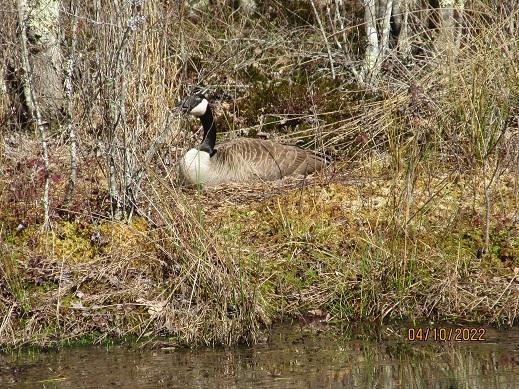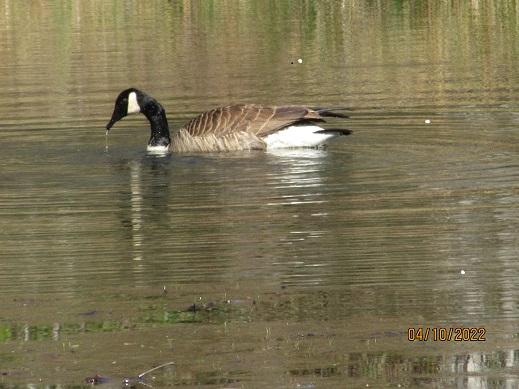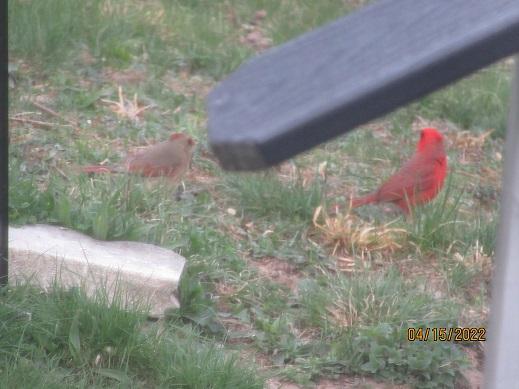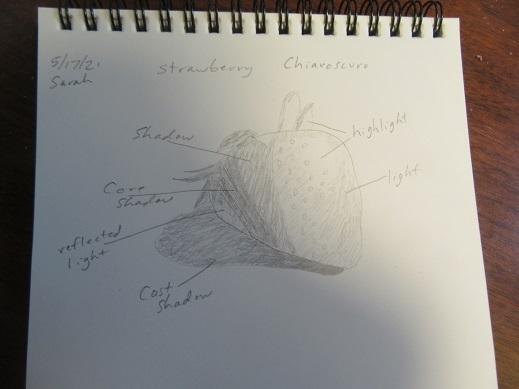Sarah
Forum Replies Created
Viewing 18 posts - 1 through 18 (of 18 total)
-
SarahParticipantI remember this walk with my grandmother. she lived in Canada, and I in Virginia, so we didn't see each other often. It was special for me to have this time with her. My father photographed this moment, back in 1965.
 in reply to: Remembering Your Moments in Nature #898938
in reply to: Remembering Your Moments in Nature #898938 -
SarahParticipantActivity 1: I love birdsong and observing bird behavior. Activity 2: We have a large veganic garden. That means we don’t use pesticides or any animal products. We grow native flowers to attract beneficial insects. It is extra work not using chemicals, but worth it to give us this joyous lifestyle. While I work in the garden, I hear birds singing. This evening, I listened to the beautiful birdsong of the wood thrust just before sunset. Activity 3: When I was 28 (almost 40 years ago), I moved from the Washington D.C. area to a rural county in the Appalachian Mountains. I was amazed to see goldfinches and bluebirds in real life. I had only seen them in World Book encyclopedia before. I felt like I was in heaven. There are still a lot of birds in this area, but I am sad to hear of their decline. That is one reason we live a vegan lifestyle, so our life causes the least amount of harm. Activity 4: I am becoming a Master Naturalist, so I can make a difference, if possible.in reply to: Activities: Helping Birds in Your World #895293
-
SarahParticipantWe went birding with our Master Naturalist class. At a lake, there were tree swallows and northern rough-winged swallows (and many other types of waterfowl- such as wood ducks, blue-winged teal, mallards, ring-necked ducks, Great blue herons, and Canada geese). At a pond where I walk frequently, I never see swallows. I only occasionally see Canada geese. At the lake, the birds are visible, but at the pond, the birds mostly stay in the forest.in reply to: Activities: Exploring Bird Habitats #895218
-
SarahParticipantToday, I was with a group for a 'tree walk', when we heard bird mobbing calls. It is so cool to come home and have this be in the lesson today.in reply to: Activities: Noticing Behaviors #894779
-
SarahParticipantActivity 1 Northern Cardinals live on our property in the mountains in Virginia year-round and delight us with their color and flight. Since they are the state bird, I was surprised to see that their range extends to Mexico. Blackburnian Warbler migrates an impressive trip from Canada to northern South America. As a child, my family (which consisted of a Canadian mother and a Chilean father) took frequent trips from Virginia to both countries, so I know how far of a journey that is! Scarlet Tanager also migrates from North America to deep into South America. I wonder if it lives in the jungle, with its beautiful red colors. Western Tanager stays on the western edge on its way from North America to Central America. I wonder what it likes about the western side. Ruby-throated Hummingbird come every year to our feeders in late spring. Seeing the migration map reminds me how it really does fly all the way from Mexico. It is cute that one group stays in eastern Florida, I guess because of blooming flowers there. Rufous Hummingbird migrates in the west, made me wonder how migrating birds avoid crashes with airplanes and helicopters, and my heart goes out for them. Sandhill Crane migrate all the way to the artic circle, it seems. That is amazing that they do that. I hope they are protected. Sadly, they avoid these Appalachian Mountains in their southern migration. We see blue herons here most of the year, coming to our pond, but perhaps they have migrated when we don’t see them in winter. Yellow-bellied Flycatcher are rare in our area, but I notice that this is in their range. I would love to see one. I think they have woodpecker habits. In their migration from Mexico to Canada, I wonder if they fly over land or water? Activity 2 Birds we have seen: Bird species- year-round residents- Northern cardinals Blue jay Pileated woodpecker Bird species- only live in our area for part of the year- Ruby-throated hummingbirds Canada goose Great Blue Heron Activity 3: Compare pictures during different seasons: birds in different plumages Summer color and pattern Winter color and pattern similarities Male American Goldfinches Starting around April, their feathers brighten up with glorious yellow. We see flocks of them on our property, and they are absolutely brilliant. Beginning in September, and continuing for six to eight weeks, they molt all of their feathers, ending up with a completely new and pristine set of feathers (and drab colors) as they head into the winter During mating season, the males have spectacular colors and markings. The female is drab, so she can sit on the nest and will blend in, as camouflage. Common Loons In its summer breeding plumage, the common loon has a black-and-white checkered back, iridescent black head and neck, black bill, red eyes, a prominent white “necklace” marking around the neck, and a much smaller white “chinstrap” marking at the throat. In the winter, loons have a much drabber plumage, with gray feathers replacing the black and white ones. Their necks and bellies are white. This plumage provides excellent camouflage while they ride the waves along the coast and on large reservoirs in the south. Activity 4: Think about your favorite birding spot. I was so excited when the Canada goose arrived at the ponds at the birding trail. There were two breeding pairs. The female was sitting on the nest twice when I went walking there. But I was sad to see one day that both pairs were gone.in reply to: Activities: Different Seasons, Different Birds #894650
-
SarahParticipantActivity 1: Cardinal Blue jay Mockingbird Blue heron Barred owl Mallard Canada geese Merganser American Gold finch Crow American Robin Eastern Blue bird Mountain blue bird Mourning dove Sparrows- Chipping, field, song Black-capped chickadee Eastern phoebe woodpeckers- pileated, hairy, downy, red-bellied tufted titmouse red-wing blackbird tree swallow European starling Brown thrasher Activity 2: bird walk local field trip with Master Naturalists Activity 3: five birds that pass through your area that you didn’t know about. Cormorant, great egret, bald eaglein reply to: Activities: Local Bird Exploration #892953
-
SarahParticipantActivity 1: It is easy to tell a hummingbird which comes to our hummingbird feeder, red-tailed hawk which hunts occasionally in our field, and blue heron by shape, all of which visit our property. Activity 2: different shades of blue, birds on our property 1. bluebird 2. blue jay 3. blue heron Activity 3: Blue heron search for food in the pond for frogs and small fish in our pond. Goldfinch search for seeds in yard. The cardinals keep returning to bird feeder area searching for seed droppings. The black vulture sailed overhead searching for road kill. Activity 4: The adult Canada geese have a long neck and big body. The neck is black, with a white band up its cheek. The feathers are brown, with white tail feathers. The pair was in a pond in a park in the National Forest. One was on a nest and the other was paddling nearby.


 in reply to: Activities: Bird ID Practice #892947
in reply to: Activities: Bird ID Practice #892947 -
SarahParticipantI love how birds wait their turn at the feeder, the chickadee after the titmouse.
 in reply to: Activities: Exploring Birds #874959
in reply to: Activities: Exploring Birds #874959 -
SarahParticipantYour journal gives me hope, too.in reply to: Tips to Keep You Going #828091
-
SarahParticipantRecently, I was walking in the woods, and my dog flushed out a deer. All of a sudden, a large doe must have gotten woken up from her hiding place and burst out of a bush at me. To stop it from crashing into me, I hollered, "No!" and it turned and ran up the path. We were equally surprised. I thought, I am a grandma who almost got run over by a reindeer. It happened too fast to photograph or draw, but I remember the surprised look of the deer as it seemed to put on the brakes while lifting her head pointing her nose in the air, and I remember how large she was. Taller than me and powerful.in reply to: Tips to Keep You Going #828090
-
SarahParticipant
 in reply to: See How Far You’ve Come #828088
in reply to: See How Far You’ve Come #828088 -
SarahParticipantI love all the nature writers already mentioned, but want to add an Appalachian woman writer Barbara Kingsolver. Even though she is a fiction writer, her background in biology gives such depth and quality to her descriptions about nature. Also, she has written some essays, memoir, and poetry.in reply to: The Power of Reflection #827508
-
SarahParticipantWow, so nicein reply to: Filling Your Sketches with Color #826836
-
SarahParticipant
@Steven thanks for the tip
in reply to: Filling Your Sketches with Color #826835 -
SarahParticipantI love it, too!in reply to: Getting Comfortable with Watercolor #826607
-
SarahParticipantWow, what a great example of a naturalist journal.in reply to: Capturing Nature’s Color Palettes #826520
-
SarahParticipantThis is the first time I have ever used a palette. I love the colors. It is a beautiful exercise.in reply to: Capturing Nature’s Color Palettes #826516
-
SarahParticipant
 I can see that the photographing accidently put more chiaroscuro on the page. I love this technique. This strawberry would be better in color. :-) in reply to: Illustrating the 3D World #816070
I can see that the photographing accidently put more chiaroscuro on the page. I love this technique. This strawberry would be better in color. :-) in reply to: Illustrating the 3D World #816070
Viewing 18 posts - 1 through 18 (of 18 total)






 I can see that the photographing accidently put more chiaroscuro on the page. I love this technique. This strawberry would be better in color. :-)
I can see that the photographing accidently put more chiaroscuro on the page. I love this technique. This strawberry would be better in color. :-)